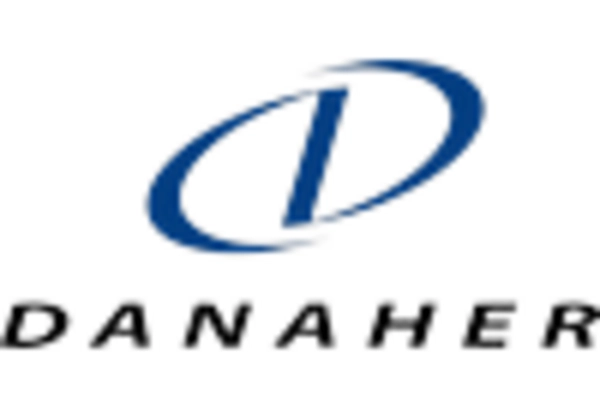Regulatory Support for Innovation
Regulatory support is emerging as a crucial driver for the life science-tools market. In the US, agencies such as the FDA are actively promoting innovation through streamlined approval processes for new technologies. This regulatory environment encourages companies to invest in the development of novel life science tools, as they can bring products to market more efficiently. the life science-tools market will see more innovative solutions that meet regulatory standards, improving the quality and safety of healthcare products.. Additionally, initiatives aimed at fostering collaboration between regulatory bodies and industry stakeholders may further accelerate the pace of innovation, creating a more dynamic market landscape.
Growing Focus on Laboratory Automation
The life science-tools market is increasingly driven by the growing focus on laboratory automation. As laboratories strive to enhance efficiency and reduce human error, the adoption of automated systems is becoming more prevalent. Market data suggests that the laboratory automation segment is expected to grow at a CAGR of around 7% in the coming years. This trend is fueled by advancements in robotics and software solutions that facilitate high-throughput workflows. The life science-tools market stands to gain from this shift, as automated tools not only improve productivity but also enable researchers to focus on more complex tasks. Furthermore, the integration of automation with data analytics is likely to provide deeper insights into experimental results, further enhancing the value of life science tools.
Rising Demand for Advanced Diagnostics
The life science-tools market is experiencing a notable surge in demand for advanced diagnostic tools. This trend is driven by the increasing prevalence of chronic diseases and the need for early detection methods. According to recent data, the diagnostic segment is projected to grow at a CAGR of approximately 8% over the next five years. This growth is largely attributed to innovations in molecular diagnostics and point-of-care testing, which enhance the accuracy and speed of disease detection. As healthcare providers seek to improve patient outcomes, investments in advanced diagnostic technologies are likely to escalate, thereby propelling the life science-tools market forward. Furthermore, the integration of artificial intelligence in diagnostics is expected to streamline processes and reduce costs, making these tools more accessible to a broader range of healthcare facilities.
Expansion of Biopharmaceutical Research
The life science-tools market is significantly influenced by the expansion of biopharmaceutical research. With the biopharmaceutical sector projected to reach a market value of over $500 billion by 2026, the demand for specialized tools and technologies is expected to rise correspondingly. This growth is driven by the increasing focus on biologics and biosimilars, which require sophisticated analytical tools for development and quality control. The life science-tools market is likely to benefit from this trend as researchers and manufacturers seek advanced solutions for drug development, including high-throughput screening and bioprocessing technologies. Additionally, collaborations between academic institutions and industry players are fostering innovation, further stimulating the demand for life science tools that support biopharmaceutical research.
Increased Investment in Genomic Research
Investment in genomic research is a key driver of the life science-tools market. As the understanding of genomics continues to evolve, funding for genomic studies has surged, with estimates indicating a growth rate of 10% annually. This influx of capital is facilitating the development of cutting-edge tools and technologies that enable researchers to explore genetic variations and their implications for health. The life science-tools market is poised to benefit from this trend, as tools such as next-generation sequencing and CRISPR technology become more prevalent in research settings. Furthermore, the application of genomic data in personalized medicine is likely to create additional demand for life science tools that can analyze and interpret complex genetic information.

















Leave a Comment